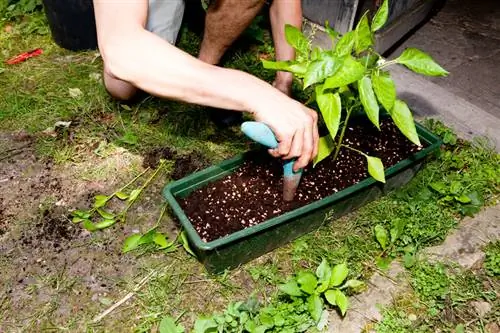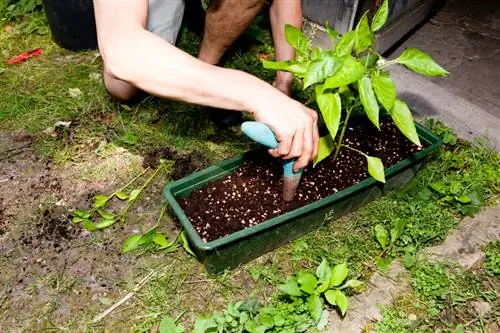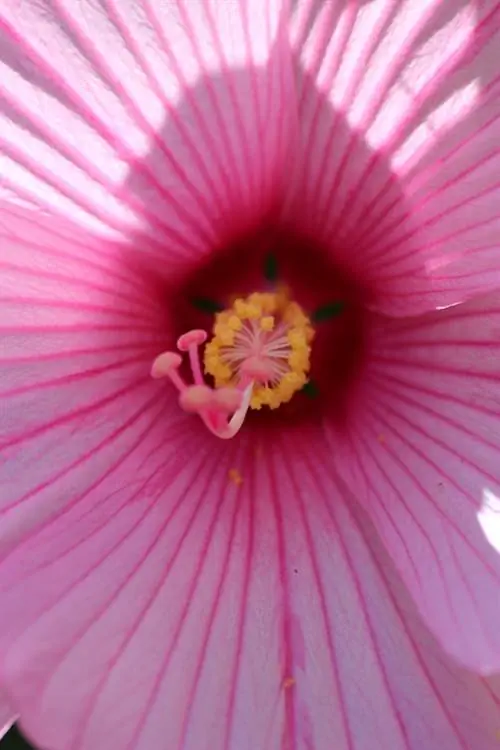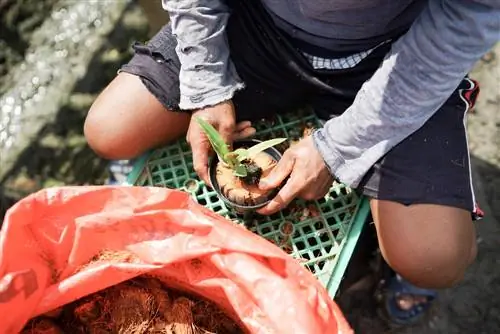- Author admin [email protected].
- Public 2023-12-16 16:46.
- Last modified 2025-01-23 11:20.
Passiflora, as the passion flower is called by knowledgeable gardeners, usually thrives excellently in pots and containers. If the plant gets too big, it can be repotted.

How do I repot a passion flower correctly?
Repotting a passion flower: Choose a planter with a maximum diameter of 30 cm that has drainage holes. Use a nutrient-rich, loose substrate mixed with clay, sand and lava granules. First add gravel, then the substrate and insert the root ball. Press the plant lightly and water it.
Don’t choose a planter too big
When it comes to the size of the pot, box or bucket, passion flowers are not too demanding; they usually thrive even in small pots and produce enchantingly exotic flowers. Newly purchased specimens should still be repotted immediately, as the pots sold are often too small or unsuitable. When choosing the pot, make sure that there are drainage holes at the bottom for excess irrigation water, because Passiflora likes it moist, but definitely doesn't like wet feet. The pot should also not be larger than a maximum of 30 centimeters in diameter, as passion flowers quickly become lazy in pots that are too large.
The right substrate for pot culture
Passion flowers need a nutrient-rich, but loose and permeable substrate that allows excess water to drain away well. The pH value is ideally between 5.8 and 6.8. You can use conventional, humus-rich potting soil (€6.00 on Amazon) or peat soil, but with clay or loam powder, a little fine sand and lava granules, etc. etc. should be mixed. At the bottom of the pot there should be a layer of gravel or pumice gravel.
Repotting Passiflora
It is best to repot the Passiflora in spring, before you put it on the balcony or in the garden. If you haven't cut back the plant yet, you can do so now before repotting.
- Get the Passiflora out of its old pot.
- To do this, first tap the pot all around to loosen the solid soil.
- Shake the root system lightly to remove the old substrate.
- Check the plant for damaged or rotting roots.
- Remove these.
- Now fill a layer of gravel at the bottom of the pot.
- The previously mixed substrate goes on top.
- Place the root ball inside and fill the voids with soil.
- Tap around the pot so that any remaining cavities can be filled with soil.
- Press the plant lightly.
- Water them.
Tips & Tricks
Since passion flowers are generally not hardy, you should cut back planted specimens in autumn, dig them up and overwinter them in a sufficiently large pot.






